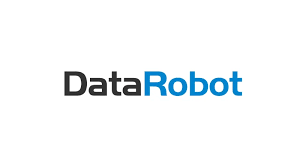The PenArtist: A Haven for Art Enthusiasts and the Latest AI Innovations
Exploring the World of Art: The PenArtist Community
The PenArtist blog serves as a unique platform for art enthusiasts, catering to individuals with diverse interests in the world of creativity. One of the blog’s defining features is its extensive coverage of various topics related to art. From traditional techniques to modern art movements, The PenArtist provides readers with a comprehensive look at different artistic expressions. Articles explore classical styles, contemporary practices, and the evolution of art, allowing enthusiasts to gain insights into the rich tapestry of artistic history.
A key aspect of The PenArtist lies in its commitment to highlighting the work of individual artists through dedicated artist spotlights. These showcases not only familiarize readers with emerging talents but also celebrate the contributions of seasoned professionals. By featuring unique perspectives and personal journeys, the blog fosters a deeper understanding of the motivations and challenges faced by artists. This creative diversity enriches the community experience, inviting dialogue and appreciation among readers and creators alike.
The PenArtist is more than just a blog; it is a thriving community where art lovers can converge, share experiences, and collaborate. Readers are encouraged to engage actively through comments, discussions, and sharing their own artistic journeys. This interaction cultivates a supportive atmosphere for both novice and experienced artists. To contribute to artistic development, The PenArtist offers a variety of resources, including tutorials and challenges, aimed at inspiring creativity and encouraging artistic growth.
Altogether, The PenArtist enhances the experience of art enthusiasts by not only providing valuable content but also by fostering a sense of connection and collaboration. This community-driven approach is essential for nurturing ongoing creativity within the art world.
AI and Art: The Cutting-Edge Intersection
Artificial intelligence (AI) has increasingly become a transformative force in the art world, serving not just as a tool but also as a collaborator and catalyst for innovation. The latest advancements in AI technology are creating waves across the artistic landscape, enabling artists to enhance their creativity and streamline their workflow. From generating unique compositions to applying various styles, AI tools are making it possible for creators to push the boundaries of traditional art forms.
One significant advancement is the development of AI-driven software that assists artists in generating initial concepts or refining existing works. Programs such as DeepArt and RunwayML allow artists to input their ideas, after which these tools can produce visual interpretations based on thousands of datasets gathered from iconic artworks. This capability not only saves time but also inspires artists by providing a fresh perspective on their creative ideas. In addition, AI has found its way into the realm of art critiques, where algorithms analyze visual elements and provide recommendations, potentially helping artists improve their techniques.
Despite the advantages, the integration of AI in the art space raises ethical considerations regarding originality and ownership. Many critics argue that AI-generated art questions the very essence of creativity, as the sourcing of data and algorithms may lead to a derivative rather than authentic expression. Moreover, artists need to consider how to credit the AI tools they use, balancing innovation with traditional values of authorship. Nonetheless, the exploration of AI as a collaborative partner is a burgeoning field, with artists experimenting with joint projects that highlight both human intuition and machine learning capabilities.
By embracing these cutting-edge developments, artists stand to enrich their practice and expand their creative expression, bridging the gap between technology and artistic endeavor. As we continue to explore AI’s impact on art, it is essential to engage thoughtfully with both its possibilities and its ethical implications.
